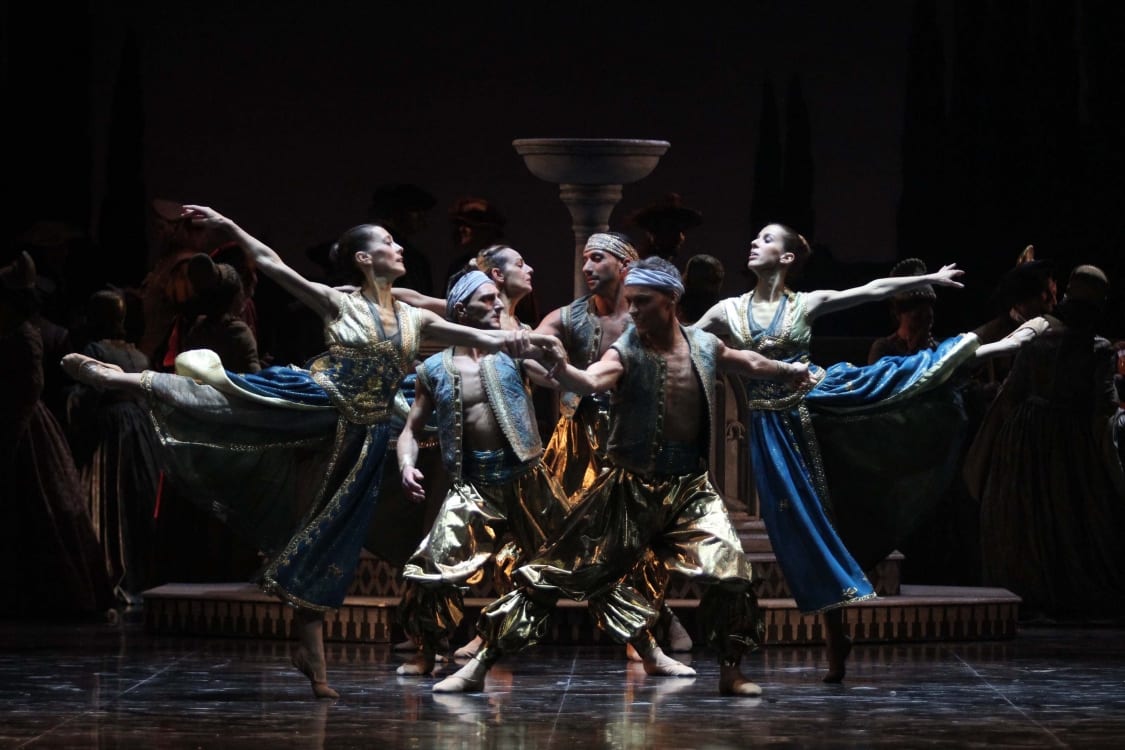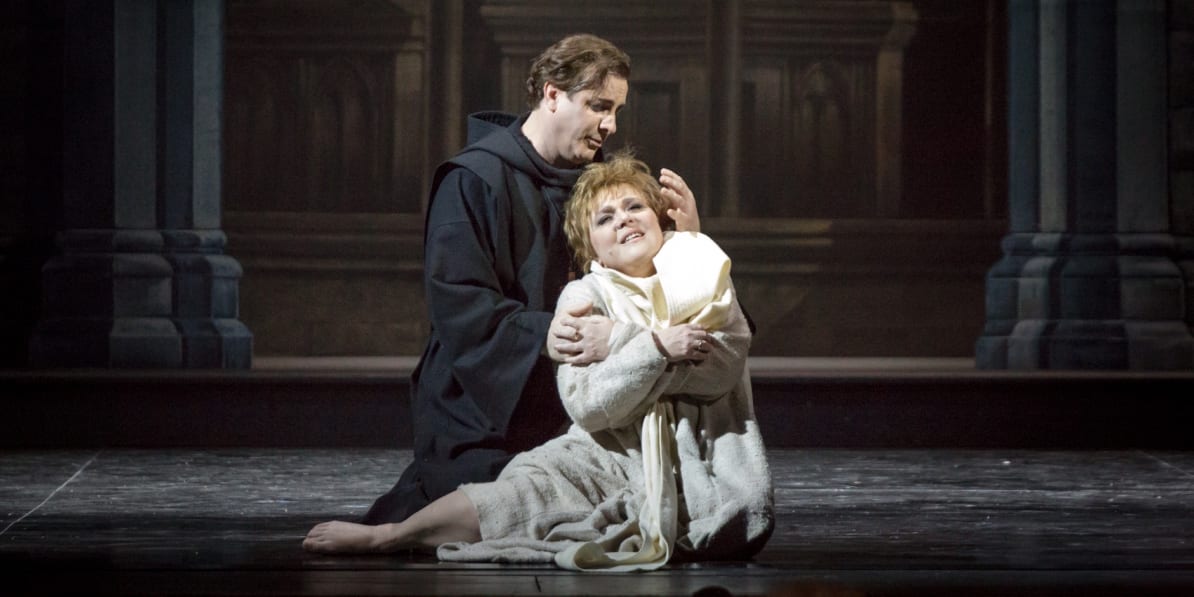The Teatro Massimo’s new production of Donizetti’s La Favorite revives the tradition of Bel Canto in all its magnificence. Performed in Paris for the first time in 1840 to a libretto by Alphonse Royer and Gustave Vaëz, La Favorite had quite a troubled genesis.
In 1840, the director of the Opera de Paris, rejected Donizetti’s opera Le Duc d’Alb, because his mistress, the mezzo-soprano Rosine Stoltz, didn’t find the lead role appealing. To overcome this misfortune, Donizetti quickly composed La Favorite in the form of grand opera borrowing heavily from earlier work and setting it in medieval Spain. Donizetti kept the original love triangle between the King of Castile, Léonor his mistress, and her naïve lover Fernand. Balthazar, the head of the convent of Saint James of Compostela, represents oppressive religious power. Donizetti also included a ballet following the tradition of French grand opera. However, with its seamless flow of arias, duets, and recitatives that slowly reveal the plot, this opera is a perfect example of the Italian Bel Canto style and, even though it is dramatically weak, the beauty of its music is captivating.
Made to measure for the stars of the time this opera pushes the voices of the four main characters to the extremes of their ranges, requiring controlled power but also agility even for the deepest male voices.

The opera is performed in the original French. The conductor, Francesco Lanzillotta shows a critical approach to the score and respect for the composer. He makes appropriate cuts to an otherwise lengthy opera and chooses the right tempi while conducting with precision.
The leading singers are of high quality and adept at this style of singing. The tenor John Osborn, who has established himself as a specialist in this repertoire, sang the role of Fernand daringly and reached with precision the many high notes. His voice is not powerful, yet it is able to reach the audience clearly. Sonia Ganassi is an exceptional Léonor: she sings the lowest notes with a dramatic charge without sparing herself on the high notes, which lie higher than the mezzo-soprano’s usual reach. Her execution of the famous aria in the third act O mon Fernand keeps the audience mesmerised. The baritone, Mattia Olivieri, infuses youthful energy into a role normally interpreted in a stiff fashion, creating a passionate and charismatic young King. Marko Mimica sang with power the role of Balthazar, although I personally prefer a more priestly approach to the character and a deeper voice.
Allex Aguilera’s direction was unabashedly traditional but it has the merit of suiting the music and the ideas of the composer rather than being the main centre of attention, as is the case very often. The action is translated to the nineteenth century, and for that purpose, the staging director Francesco Zito has created daring and austere neo-gothic architecture which contrast with beautifully hand-painted Mediterranean scenes and lively, colourful costumes. All this, together with the exotic ballet choreography by Carmen Marcuccio, give the audience a true grand opera experience.

